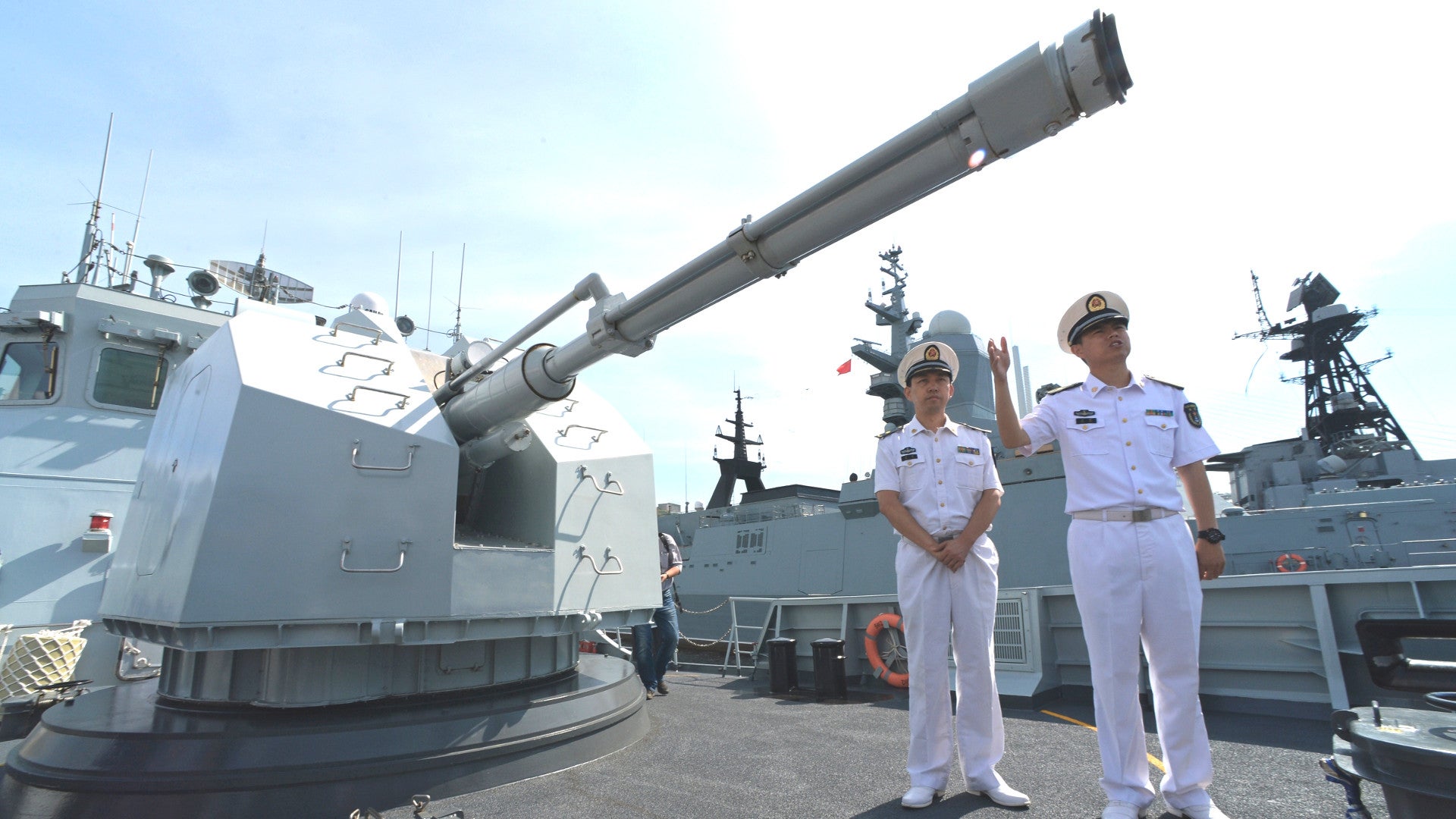Fresh satellite imagery of China’s new military base in Djibouti shows it is significantly more complex, with a large underground component, and an expansive defensive perimeter, than originally thought. The new details only underscore the importance of the facilities and the likelihood that they will serve as more than just a logistics hub for future Chinese operations.
Geopolitical analysis firm Stratfor published the images, which it obtained though another partner, AllSource Analysis, which showed the site in the Horn of Africa as it existed on April 2 and July 4, 2017. The annotated images specifically highlighted new 25 foot wide walls, as well as guard posts and fences. For what is ostensibly a naval facility, there’s a notable lack of docks directly adjacent to any of the facilities. But the most impressive feature by far is a massive underground complex covering an estimated area of nearly 250,000 square feet.
“The underground entrance connects to other underground facilities at the base as well,” according to Stratfor’s own analysis. “Besides the large underground structure, several smaller tunnels and bunkers were built throughout the base. This type of construction is in line with known Chinese practices in hardening military bases.”
China’s People’s Liberation Army (PLA) is definitely no stranger to large subterranean construction. The PLA’s Second Artillery Corps, the name of the country’s land-based nuclear forces, operates a single network of more than 3,000 miles of tunnels, which state media has dubbed the “Underground Great Wall.” There’s also the People’s Liberation Army Navy (PLAN) extensive network of underground facilities, including a submarine pen, on Hainan Island.

The underground projects make sense. They afford added protection against attacks and destructive environmental hazards, like sand and severe weather. As Stratfor noted, Chinese personnel could use the space to conduct a variety of activities discreetly, too.
If nothing else, it adds significantly more storage room to what might otherwise be a cramped enclave. A portion of the underground part of the base likely includes hardened bunker areas for a command post and other sensitive operations spaces. With entrances that look large enough to drive vehicles in and out of, the PLA might be able to keep a portion of the base’s motor pool or other equipment safely stored away from the elements. It would be an ideal way of finding room for reserves of fuel, lubricants, and water, too.

The base needs these and other resources to both to perform its day to day functions, whatever they may be, and support PLAN task forces as they move in and out the area. If China hopes to make the base a regular port of call for larger groups of ships, including future carrier battle groups, it will need to have significant reserves of a number of items on hand.
It’s also worth noting that the largest area of underground construction at China’s Djibouti base sits under what otherwise appears to be a series of hangars and an attached aircraft apron that does not appear big enough at present to handle fixed wing aircraft, like fighter jets, surveillance planes, cargo aircraft, or even larger drones, but could support either helicopters or smaller drones. It is possible that fuel storage underneath could feed into pump stations or hydrants above ground.
Having all this on hand would give the base the ability to operate independently from local suppliers for at least a short period of time if necessary, too. Maybe part of the underground complex will contain a generating station to provide a separate and secure power supply, as well.
Whatever the purpose of this underground complex is, it’s definitely an important development and one that highlights many of the points we at The War Zone made earlier in July 2017 when we took an in depth look at China’s plans:
But these official missions are just one piece of the larger picture. Beyond regional security concerns, the facility in Djibouti can only help China obvious desire to expand its military presence well beyond its borders. The African country is strategically located near the Suez Canal, providing a stable, Chinese-controlled stop-over point for military fleets heading to Europe and beyond. Its especially well positioned to both protect the transport of Middle Eastern and African energy and mineral resources critical to China’s overall economic development, as well as provide storage space for the fuel and other supplies the PLA needs to conduct operations in Africa and Europe. Having these port facilities will be essential if the country wants to conduct far-flung carrier battle group operations. It seems almost guaranteed that once the base in fully operational the country’s first operational carrier, the Liaoning, and its escorts will make it a regular port of call.

There’s likely to be more construction to come, as well. As Stratfor’s analysis pointed out, without its own docks in Djibouti, the PLAN will have to continue using the country’s commercial port facilities. Helicopters could ferry small loads back and forth from ships off shore, but it would be much less efficient than loading and unloading pier side.
When and if the Chinese decide to build these dock works, the final configuration of the base could be considerably larger. To accommodate the carrier Liaoning at its naval complex on Hainan Island, the PLAN built a new pier nearly 2,300 feet long, which made it the largest in the world. The Djibouti facility would need something similar if the flattop ever intended to tie up at the base proper.
But it’s already clear that the Chinese are definitely serious about their new base. The new construction shows they are looking to get as much out of it as they can.
Contact the author: joe@thedrive.com

